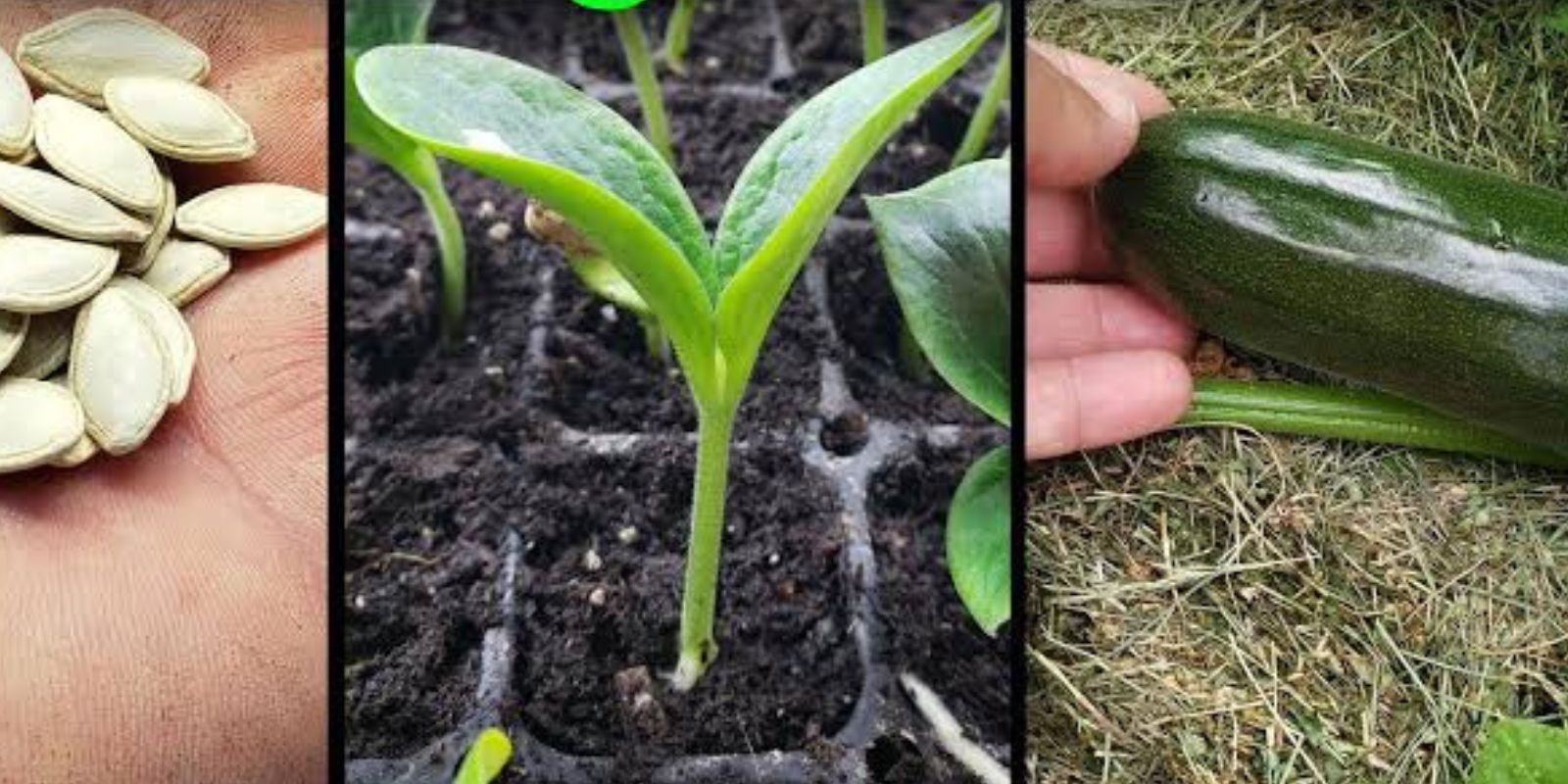Zucchini, also known as courgette, is a versatile and highly productive vegetable that thrives in the right conditions. While traditionally grown in garden beds, cultivating zucchini in containers has gained popularity due to its practicality and space-saving benefits. Whether you’re a beginner gardener or an experienced plant enthusiast, this step-by-step guide will walk you through the process of growing zucchini in containers, ensuring a bountiful harvest.
Why Grow Zucchini in Containers?
Growing zucchini in containers offers several advantages:
- Space Efficiency: Ideal for small spaces like balconies, patios, or rooftops.
- Pest Control: Containers reduce exposure to ground-dwelling pests.
- Mobility: You can easily move containers to optimize sunlight and protect plants from adverse weather.
- Soil Management: Control over soil quality ensures optimal growth conditions.
Materials You’ll Need
- Large Container: At least 18 inches in diameter and depth, with drainage holes.
- High-Quality Potting Mix: Enriched with organic matter or compost.
- Zucchini Seeds or Seedlings: Choose a variety suited for container gardening.
- Watering Can: For consistent hydration.
- Balanced Liquid Fertilizer: To support growth and fruiting.
- Mulch (optional): Helps retain soil moisture and reduce weeds.
- Trellis or Stake (for climbing varieties): Provides support and saves space.
Step-by-Step Guide to Growing Zucchini in Containers
1. Choosing the Right Container
- Zucchini plants have extensive root systems and require a container that provides adequate space. A minimum size of 18 inches in diameter and depth is essential.
- Ensure the container has drainage holes to prevent waterlogging, which can lead to root rot.
2. Preparing the Soil
- Fill the container with a high-quality potting mix. Avoid using garden soil, as it may compact and hinder root growth.
- Mix in compost or organic matter to enrich the soil with nutrients.
3. Planting Seeds or Seedlings
- Seeds: Plant 2–3 seeds in the center of the container, about 1 inch deep. Cover lightly with soil.
- Seedlings: If using pre-grown seedlings, dig a small hole in the center of the container, place the seedling, and cover its roots with soil.
4. Watering
- Initial Watering: Water thoroughly immediately after planting.
- Regular Watering: Keep the soil consistently moist but not waterlogged. Water at the base of the plant to avoid wetting the leaves, which can lead to fungal issues.
5. Providing the Right Conditions
- Sunlight: Zucchini plants need 6–8 hours of direct sunlight daily. Place the container in a sunny spot.
- Temperature: Maintain a temperature range of 70–85°F (21–29°C) for optimal growth.
6. Fertilizing the Plant
- Use a balanced liquid fertilizer every 4–6 weeks to provide essential nutrients.
- Avoid over-fertilizing, as excessive nitrogen can result in lush foliage but poor fruit production.
7. Supporting the Plant
- For climbing or sprawling varieties, install a trellis, cage, or stake to keep the plant upright. This prevents fruits from resting on the soil, reducing the risk of rot and pests.
8. General Plant Care
- Pruning: Remove yellowing or diseased leaves to improve air circulation and maintain plant health.
- Pest Control: Watch for common zucchini pests like aphids and squash beetles. Use organic insecticides or handpick pests as needed.
9. Harvesting Your Zucchini
- Zucchini is typically ready to harvest 50–60 days after planting.
- Harvest when the fruits are 6–8 inches long for the best flavor and texture.
- Use a sharp knife or scissors to cut the fruit, leaving a small portion of the stem attached.
Troubleshooting Common Issues
- Powdery Mildew:
- Symptoms: White powdery spots on leaves.
- Solution: Improve air circulation and avoid overhead watering. Use a fungicide if necessary.
- Blossom End Rot:
- Symptoms: Blackened tips on fruits.
- Solution: Ensure consistent watering and adequate calcium in the soil.
- Poor Pollination:
- Symptoms: Fruits fail to develop or grow abnormally.
- Solution: Hand-pollinate flowers using a small brush or encourage pollinators by planting companion flowers nearby.
Benefits of Container-Grown Zucchini
- Freshness: Harvesting zucchini straight from your container ensures unmatched freshness.
- Health Benefits: Zucchini is rich in vitamins, minerals, and antioxidants, making it a nutritious addition to your meals.
- Environmental Impact: Growing your own food reduces reliance on store-bought produce, minimizing carbon footprints.
Delicious Ways to Use Zucchini
Once you’ve harvested your zucchini, the possibilities are endless:
- Grill slices for a smoky side dish.
- Spiralize into zucchini noodles for a low-carb pasta alternative.
- Bake zucchini bread for a sweet treat.
- Add to soups, stews, or stir-fries for added nutrition.
Conclusion
Growing zucchini in containers is a rewarding gardening venture, perfect for those with limited space or beginner gardeners. By following this guide, you’ll enjoy the satisfaction of cultivating your own food and the delight of harvesting fresh, homegrown zucchini.
Have you tried growing zucchini in containers? Share your experience or tips below! 🌱🍃 #GrowYourOwnFood #ContainerGardening #ZucchiniHarvest #UrbanGardening

